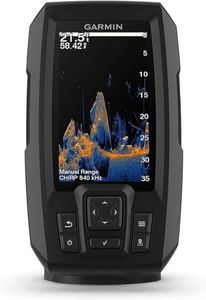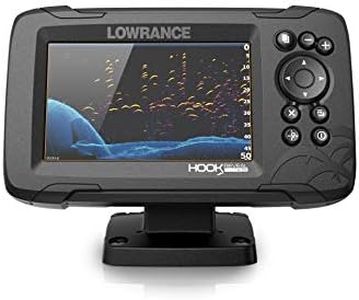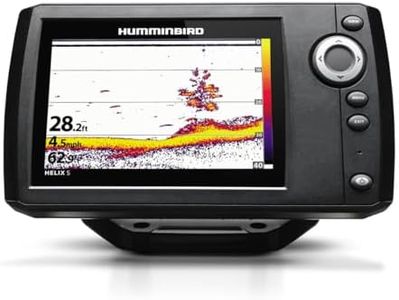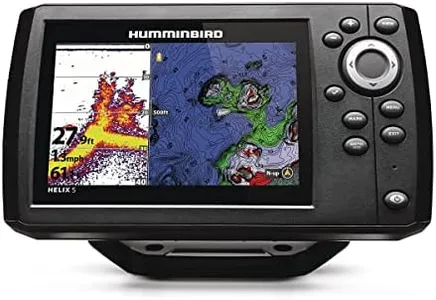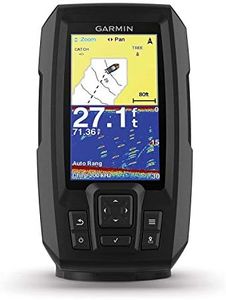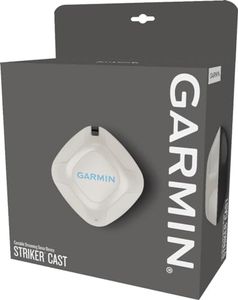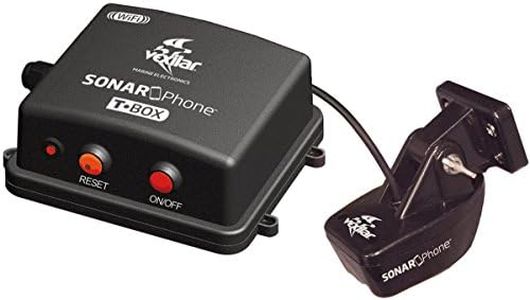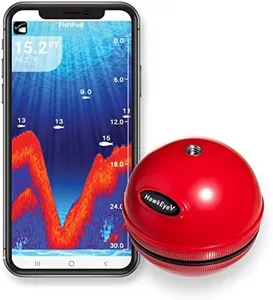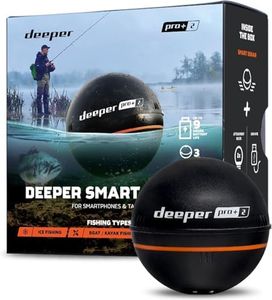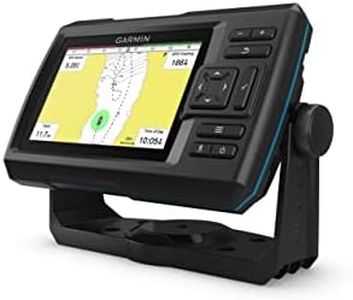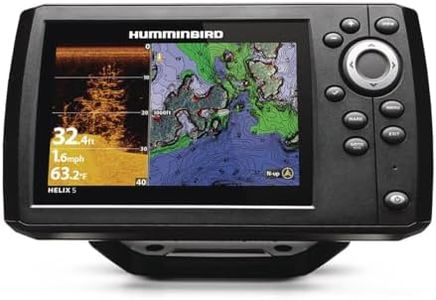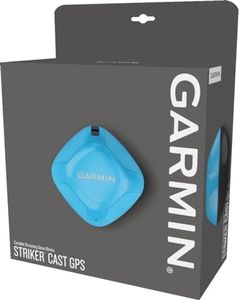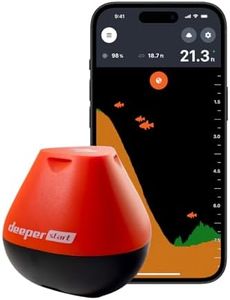We Use CookiesWe use cookies to enhance the security, performance,
functionality and for analytical and promotional activities. By continuing to browse this site you
are agreeing to our privacy policy
10 Best Canoe Fish Finders
From leading brands and best sellers available on the web.Buying Guide for the Best Canoe Fish Finders
When choosing a fish finder for your canoe, the goal is to make your fishing trips more successful without adding unnecessary hassle. Canoe fishing often means limited space and sometimes tricky mounting options, so it's important to focus on compact units that are easy to install and remove. The best fish finder for you is one that fits your style of fishing, the waters you fish, and how often you plan to use it. Understanding the main specifications will help you make a better decision and avoid overpaying for features you don't need.Transducer TypeThe transducer is the part of the fish finder that sends and receives sonar signals underwater to locate fish and map the bottom. For canoes, portable transducers are especially important because they can be easily mounted and removed without causing any damage or needing permanent installation. Some transducers can be simply attached using suction cups, clamps, or even floated alongside the canoe. If you fish in deeper waters, you may want a more powerful transducer, but for most canoe fishing in lakes or rivers, standard portable ones will serve you just fine. Think about how much setup and teardown you want to deal with and pick accordingly.
Display Size and ResolutionThe display is where you view all the information the fish finder gathers. Larger screens and higher resolution make it easier to see details, even in bright sunlight or from a distance. For a canoe, you want a balance; a huge screen could get in the way and take up space, while a very small one may be hard to interpret. Small to medium displays (typically 3 to 5 inches) are more manageable and portable, but if you have eyesight challenges or want more detail, inching up in size or clarity could be worthwhile. Your fishing habits—like using it solo, in daylight, or needing quick glances—should guide your choice here.
Power SourceFish finders typically need a power source, and for canoes, portability is essential. Some models run on standard AA or AAA batteries, others require rechargeable packs, and some need a 12V external battery. If you take short trips, a battery-operated unit may be easier as you can simply swap batteries. For longer excursions, consider how you'll recharge or change power sources. Assess your trips' duration, how often you want to recharge, and how much extra gear you want to carry to help decide.
Sonar Technology (Single vs. Dual Beam, CHIRP, Side Imaging)Sonar technology is what helps you see underwater features and find fish. Basic models use a single beam, sending one sonar signal downward—these are easier to use and simpler for beginners. Dual beam adds another angle, giving you a wider view of what's below. CHIRP sonar provides more detailed and accurate readings and is popular with more serious anglers. Side imaging gives a wide view to the sides of your canoe, but this is often more expensive and complex. Think about your fishing spots: for small lakes and straightforward spots, basic sonar is usually enough, but more advanced features can be helpful for complex underwater terrain or if you love exploring.
Portability and Mounting OptionsBeing on a canoe means your fish finder needs to be easy to attach, remove, and carry, as well as resistant to water splashes and bumps. Some fish finders are specifically marketed as 'portable' and include all-in-one carry cases, easy-mount brackets, and detachable components. Others are more permanent and take longer to install, which may not suit a canoe. Think about whether you want to store your fish finder between sessions, use it on more than one boat, or need to pack up quickly—these needs point toward more portable solutions.
Water ResistanceSince canoes are open and water can easily splash your devices, choosing a fish finder with good water resistance is crucial. Devices are usually rated using the IP code, indicating how well they resist dust and water. While high-end waterproofing is great, most modern portable models are designed to handle splashes and light rain. If you regularly deal with harsh weather or risk your device falling in, prioritize higher-rated water resistance.
